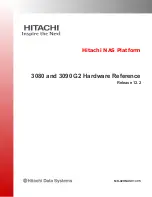
Confidential
MANUAL
49(51)
Document number
Revision
7/198 17-LXE 108 566 Uen
A
Note: Any hard copy of this document is for reference only.
Due to template and application dependencies the header and footer may fail to display correct data. It is the
responsibility of the user to ensure that they have a correct and valid version. Any outdated hard copy is invalid and must be removed from possible use.
6.6 Connection of Components to GM-41
•
The integrator is responsible for the final integrated system. Incorrectly designed or installed, external
components may cause radiation limits to be exceeded. For instance, improperly made connections or
improperly installed antennas can disturb the network and lead to malfunctions in the module or
equipment.
6.7 Network and Subscription
•
Before your application is used, you must ensure that your chosen network provides the necessary
telecommunication services. Contact your service provider to obtain the necessary information.
•
If you intend to use SMS in the application, ensure this is included in your (voice) subscription.
6.8 Antenna
Type
When choosing an antenna for your application you must consider the following requirements
:
•
The antenna must be designed for the EGSM/GSM 900 and DCS 1800 MHz frequency band (dual
band)
•
The impedance of the antenna and antenna cable must be 50
Ω
.
•
The VSWR value should be less than 2:1.
6.9 Antenna
Placement
•
If the antenna is to be mounted outside, consider the risk of lightning. Follow the instructions provided by
the antenna manufacturer.
•
Never connect more than one module to a single antenna. The module can be damaged by radio
frequency energy from the transmitter of another module.
•
Like any mobile station, the antenna of the module emits radio frequency energy. To avoid EMI
(electromagnetic interference), you must determine whether the application itself, or equipment in the
application's proximity, needs further protection against radio emission and the disturbances it might
cause. Protection is secured either by shielding the surrounding electronics or by moving the antenna
away from the electronics and the external signals cable.
•
The module and antenna may be damaged if either come into contact with ground potentials other than
the one in your application. Beware, ground potential are not always what they appear to be.
•
In the final application, the antenna must be positioned more than 20 cm away from human bodies.
When this rule cannot be applied, the application designer is responsible for providing the SAR
measurement test report and declaration.
6.10 Possible Communication Disturbances
•
Noise
can be caused by electronic devices and radio transmitters.
•
Path-loss
occurs as the strength of the received signal steadily decreases with the distance from the
transmitter.
•
Shadowing
is a form of environmental attenuation of radio signals that is caused by hills, buildings,
trees or even vehicles. Inside buildings this can cause problems, especially if the walls are thick and
reinforced.
•
Multi-path fading
is a sudden decrease or increase in the signal strength. This is the result of



































